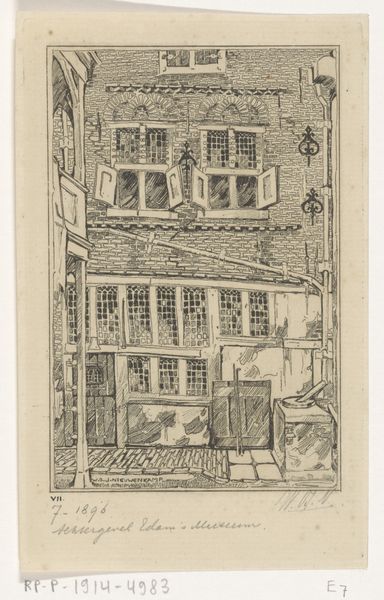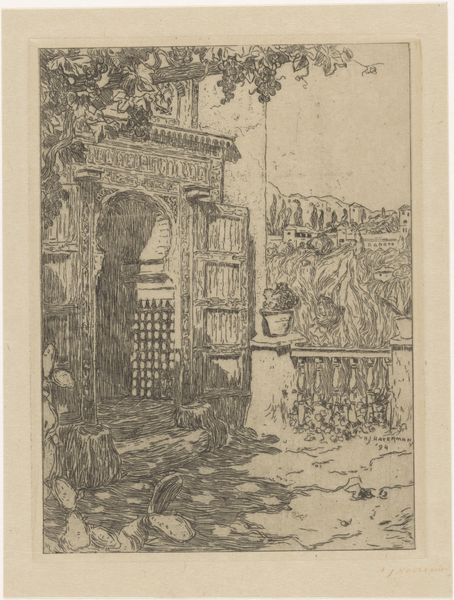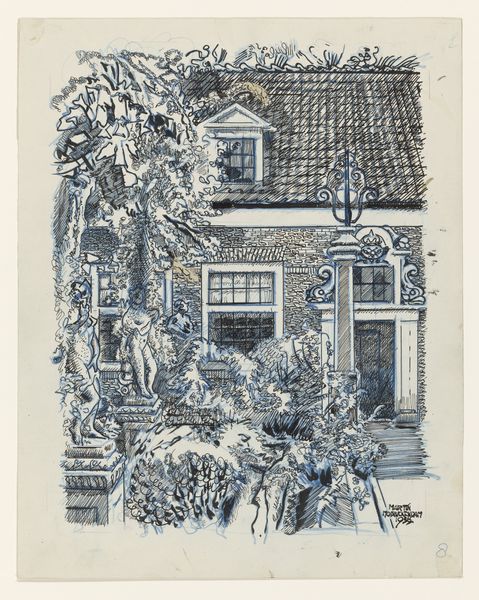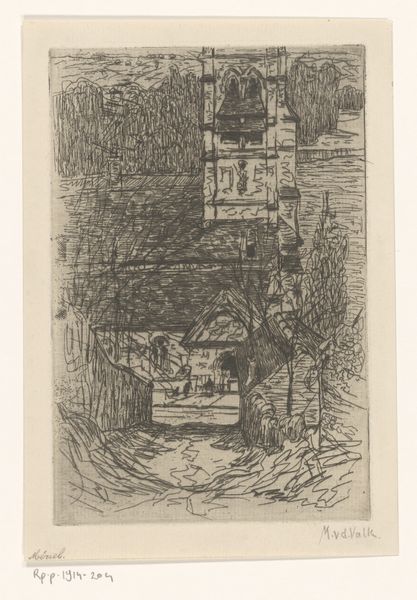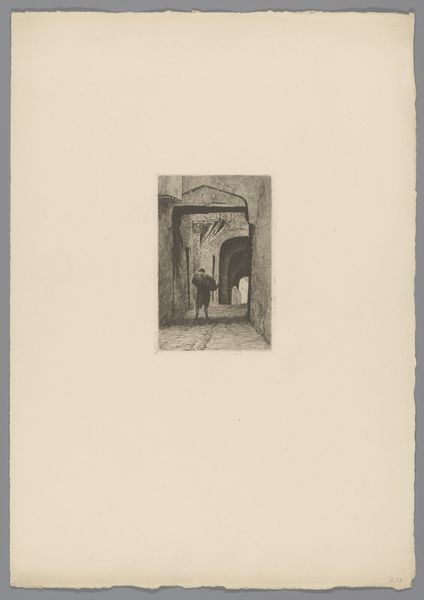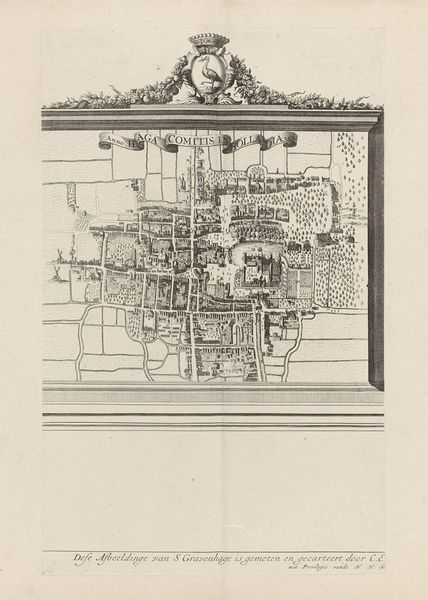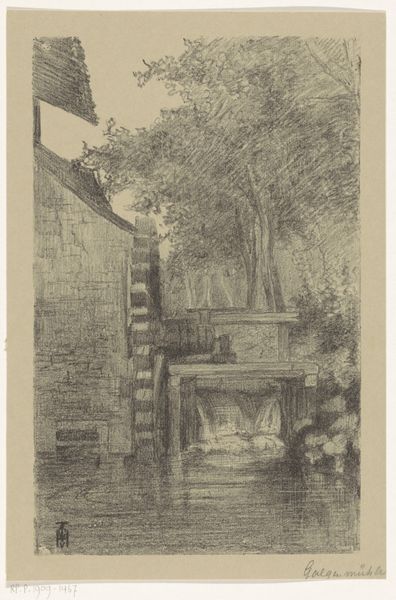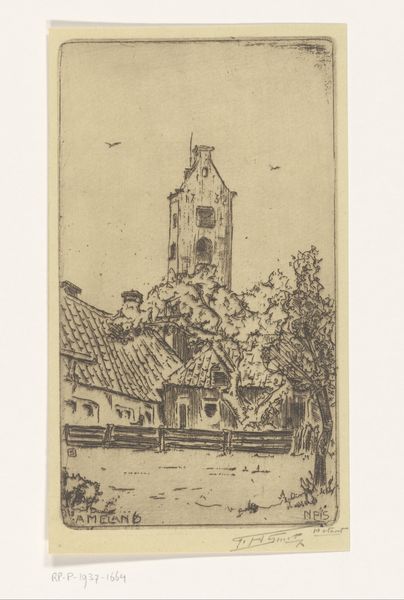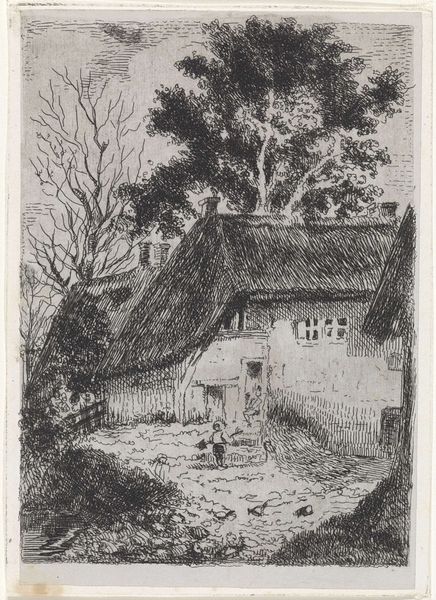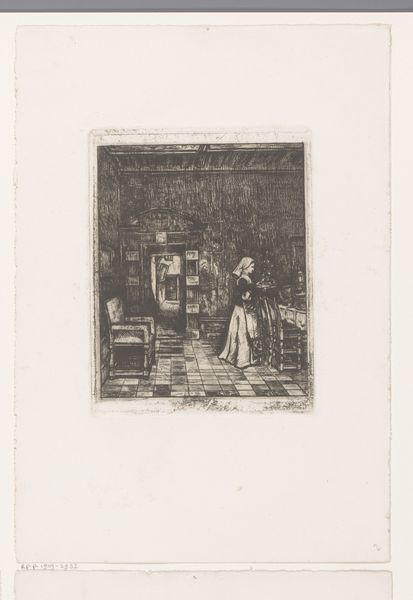
drawing, print, etching, ink
#
drawing
#
dutch-golden-age
# print
#
etching
#
landscape
#
ink
#
line
#
cityscape
#
realism
Dimensions: height 133 mm, width 92 mm
Copyright: Rijks Museum: Open Domain
Editor: Here we have "Brouwershofje in Haarlem," an etching made with ink on paper by Wijnand Otto Jan Nieuwenkamp sometime between 1900 and 1907. I find the contrast between the light walls and the deeply shaded roof fascinating. What do you see in this piece? Curator: I see a compelling study in texture and form, independent of the representational subject matter. Notice the intricate patterns created by the dense lines used to depict the roof tiles and the foliage. These patterns create a visual rhythm that draws the eye across the surface of the work, regardless of narrative context. Editor: So, you're less interested in the narrative and more in the... structure of the artwork? Curator: Precisely. The artist's strategic use of line weight and density, regardless of representational value, establishes a dynamic interplay of light and shadow, shaping the composition's inherent aesthetic qualities. For example, consider the gradations from light to dark as one moves from the façade inward, through the archway, culminating in the figure within. Editor: That's an interesting point. I was focused on the old woman at the center but now I see it. It does lead your eye inwards. Curator: Furthermore, examine the geometrical exactitude used in delineating architectural features—the doorway's arch, window panes, and roof edges. These hard forms juxtapose against the organic textures of the foliage and rendering of roof tiles, highlighting the dialectical relationship between order and nature, form and freedom within the picture plane. What effect do you think the hard lines have within the image? Editor: It gives stability. Without it the foliage might swallow the entire image. This has been eye opening. I focused too much on subject matter and forgot to look closely at how the artwork is put together. Curator: Indeed. It's crucial to see the work for its formal qualities first, recognizing how shape, line, and tone construct an artwork, and thereby structure the viewer's experience.
Comments
No comments
Be the first to comment and join the conversation on the ultimate creative platform.
